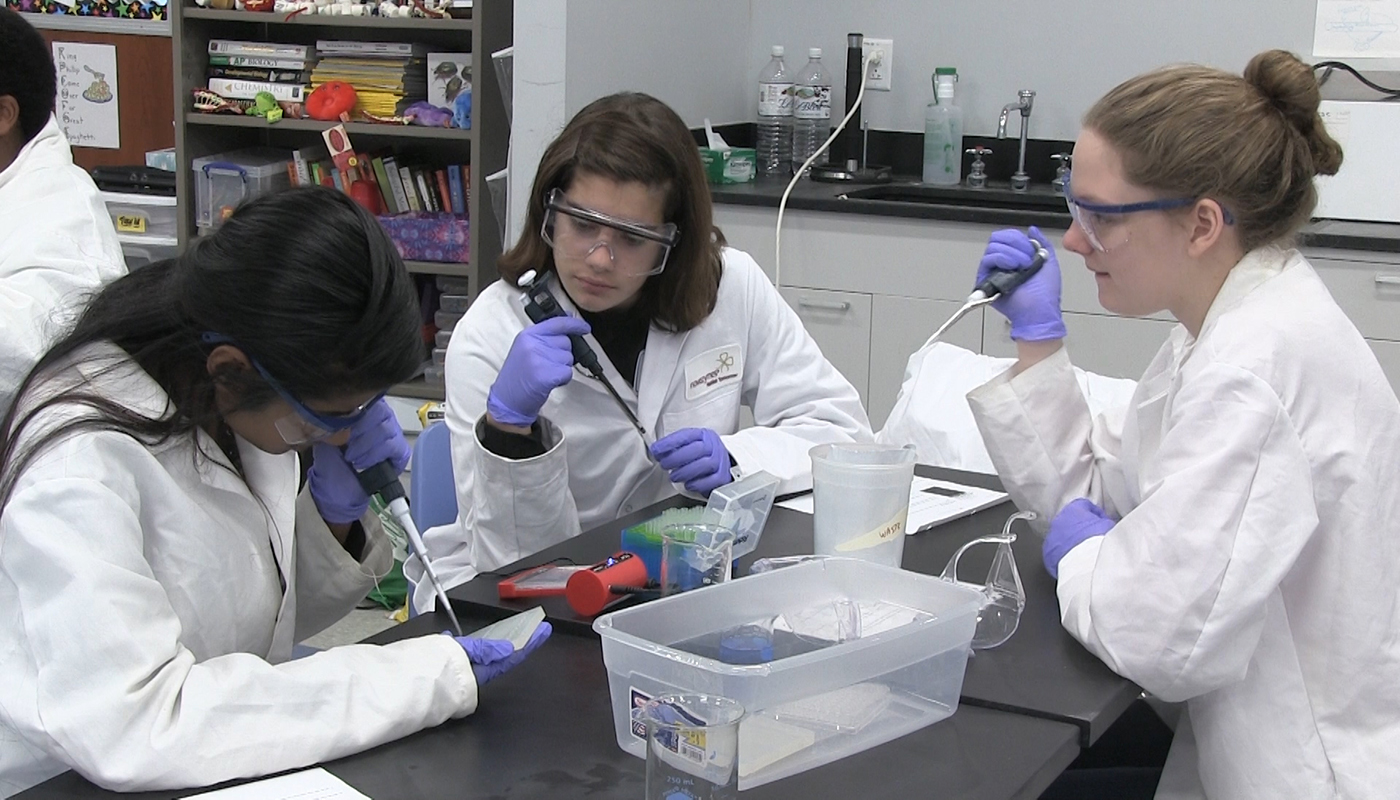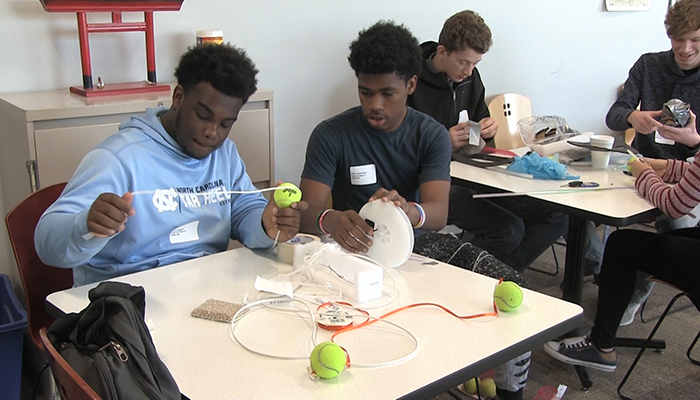
“Content is dead.” I said that almost 10 years ago in a promotional video for an educational program I helped develop. At the time, I believed the need for students to passively receive information had passed.
Students needed the tools for learning on their own, and we don’t do that very well in traditional high schools, where everything is about capturing more information and then showing off that you know it.
Then I opened a school that reverses how students traditionally learn. Research Triangle High School serves students from 11 counties and from more than 60 different middle schools of all kinds: traditional public, charter, private, and home. We had great teachers leading great classrooms. We were the first fully flipped high school in North Carolina, in which teachers deliver content knowledge outside of class so that students can practice, apply, and build on what they have learned during the school day.
I wanted to create a school that taught the skills and thinking that support future independent learners. I wanted a school where content was the vehicle for building those skills, and where tests were incidental — not the primary focus of every day. A school where students show their creativity and attention to quality. This is when I heard about the Summit Learning approach.
A Philosophy That Works
When I first heard of the Summit Learning program, we were entering our third year of operation. I was hesitant to ask teachers to change their approach from being good content presenters to people who really knew their students and individually addressed their needs. We had great teachers leading great classrooms. Did I want to risk what we’d built by trying something new?
We had already experimented with self-directed learning and thought we could implement it ourselves, but wanted to get our hands on Summit Learning tools.
It wasn’t long before I was convinced that we needed not just the tools, but also the philosophy of Summit Learning. This combination of repeated assessment, formative feedback, and attention to the skills that make students strong self-directed learners excited me.
My belief in the model was cemented two years ago, as one of our students enrolled in Math 1. She began working at such a pace that she finished the class curriculum by January. We took a chance and moved her to the next advanced math class, and she finished that curriculum by the end of the year and got the highest proficiency level on the state exam that year. Since then, she’s jumped ahead two years in math because of the Summit Learning model and is tearing up Math 3 honors.
In contrast, at most schools I’ve worked with, students who learn how to study and understand the system get better grades, and those who don’t are stuck. Most high schools don’t explicitly teach those learning skills.
The Summit Learning model explicitly makes Cognitive Skills the curriculum, and that changes the stakes. Students without access to those skills are not as well-equipped to get the most out of real-world opportunities that maximize their potential.
Students who participate in the Summit Learning approach can gain access to that power. I get to watch students move from doing everything when and how the teacher tells them, to a classroom where they prove what they have learned and decide how they’ll prove it.

Student-Driven Learning
I love the way students’ questions have changed; it’s no longer, “How do I get an A?” but “How do I do this better?”
I’ve seen this transformation in my own daughter, who attends the school I lead. Last September at the beginning of 9th grade, we had a powerful talk about why the school was focusing on skill set development instead of grades. I asked what she would do if she knew she had an A. She replied that she would work only hard enough to keep it.
Then I asked her if there were areas she knew she could continue to improve in, no matter what her grade was. She rattled off a list of things she could do to improve her skills.
In that conversation, I got to watch her intellectual transformation from grade-chasing to self-improvement. Now, we always talk about moving to the next Cognitive Skill level or what else she can do to move toward Content Knowledge Mastery on her next assessment.
What’s changed those questions is the emphasis on growth mindset. By tying achievement to improvement, we build in students the expectation that they can always do better; we break down the old model where students have one chance to get everything right, where learning after the test doesn’t count. Instead, learning never stops.
Content Lives… But Looks Different
Last year, I taught one section of AP Chemistry so that I could experience customizing a curriculum on the Summit Learning Platform to fit my students and their needs. I learned how to give feedback and structure student growth in the classroom. It was a fascinating experience.
I came to understand that with Summit Learning, we still study our subjects; however, content capture — as in passively receiving information— is no longer the goal. We use content as the medium for learning how to learn through projects, and learning about ourselves.
I watched a student redo a lab last year for fun because he wanted to try something that was off-protocol. He had already finished the project and had his grades. But he tried his experiment and then went back and rewrote the report, simply because he wanted to explain the changes he made. His skill level improved significantly and he grew as a student not because he learned more science, but because the science content he learned bolstered his interest and subsequent skill set.
When my students are long gone and have forgotten most of that class, they’ll still know how to keep learning. They’ll know how to locate problems in their work and plan for improvement. They’ll know how to present information and will be far more independent in their ability to conduct work because of the outcomes the Student Learning experience provides.
Learn more about why school leaders are choosing Summit Learning for their schools on the Summit Learning Blog.

